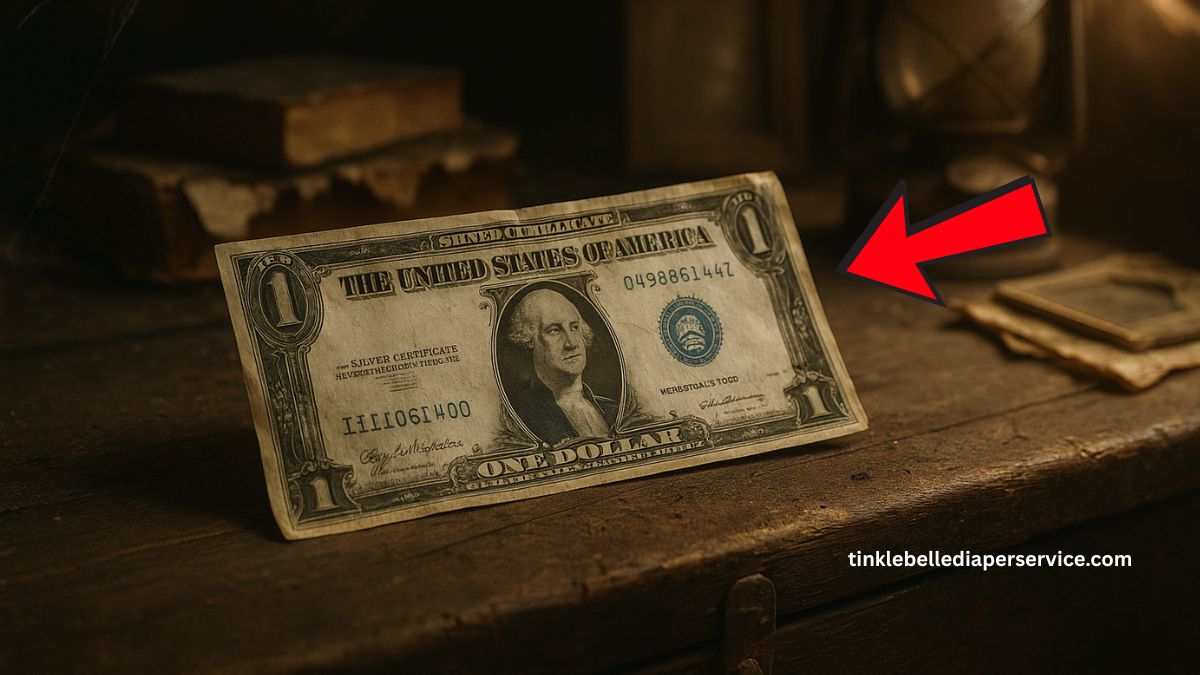A rare 1935E $1 Silver Certificate with a printing error has been discovered in an attic, capturing the attention of collectors and numismatists alike.
This unique find, characterized by an inverted serial number, has been appraised at over $60,000, highlighting the significant value that such errors can command in the currency collecting community.
The Discovery: A Hidden Treasure in the Attic
During a routine cleanup of an old family attic, a resident stumbled upon a collection of vintage currency.
Among these was a 1935E $1 Silver Certificate exhibiting an unusual feature: the serial number on the right side was printed upside down. Recognizing the potential significance, the note was submitted for professional evaluation.
The certificate was authenticated and graded by Paper Money Guaranty (PMG), receiving a grade of CU64 EPQ (Choice Uncirculated 64, Exceptional Paper Quality). The inverted serial number, a result of a printing mishap, significantly enhances the note’s rarity and desirability among collectors.
Understanding the Printing Error
Printing errors on currency notes are anomalies that occur during the manufacturing process. These errors can include misalignments, ink smears, or, as in this case, inverted serial numbers.
Such mistakes are rare, especially in notes that have remained in uncirculated condition, making them highly sought after in the numismatic market.
The 1935E series of Silver Certificates were produced during a time when quality control processes were less stringent than today, allowing for occasional errors to slip through undetected. The inverted serial number on this note is a prime example of such an oversight.
Valuation and Market Impact
The value of currency notes is influenced by several factors, including rarity, condition, and historical significance. Error notes, particularly those in pristine condition, can command substantial premiums.
In this instance, the combination of the inverted serial number and the uncirculated condition of the 1935E $1 Silver Certificate has led to an appraisal value exceeding $60,000.
This valuation reflects the note’s uniqueness and the high demand among collectors for such rare errors.
Comparative Analysis of Similar Error Notes
To contextualize the value of the discovered note, consider the following examples of error notes and their market values:
| Note Description | Error Type | Grade | Estimated Value |
|---|---|---|---|
| 1935E $1 Silver Certificate | Inverted Serial Number | CU64 EPQ | $60,000+ |
| 1957B $1 Silver Certificate | Mismatched Serial Numbers | PMG 66 Gem Unc EPQ | $1,680 |
| 1935C $1 Silver Certificate | Misalignment Error | Ungraded | $145 |
| 1934 $1 Silver Certificate | Gutter Fold Error | PMG VF30 | $200 |
Note: Values are approximate and subject to market fluctuations.
The discovery of the 1935E $1 Silver Certificate with an inverted serial number underscores the fascinating world of currency collecting, where even small anomalies can lead to significant value.
This find serves as a reminder to collectors and the general public alike that hidden treasures may reside in the most unexpected places, waiting to be uncovered and appreciated for their historical and monetary worth.
FAQs
What makes an error note valuable?
Error notes are valuable due to their rarity and the uniqueness of the printing mistake. Factors such as the type of error, the note’s condition, and its historical context contribute to its market value.
How can I verify if my currency note has a printing error?
Examine the note for anomalies such as misaligned prints, inverted serial numbers, or unusual ink patterns. For confirmation and valuation, consult with professional grading services like PMG or PCGS.
Are all error notes worth a significant amount?
Not necessarily. While some error notes can be highly valuable, others may only carry a modest premium over face value. The specific error type, rarity, and condition of the note are critical factors in determining its worth.

